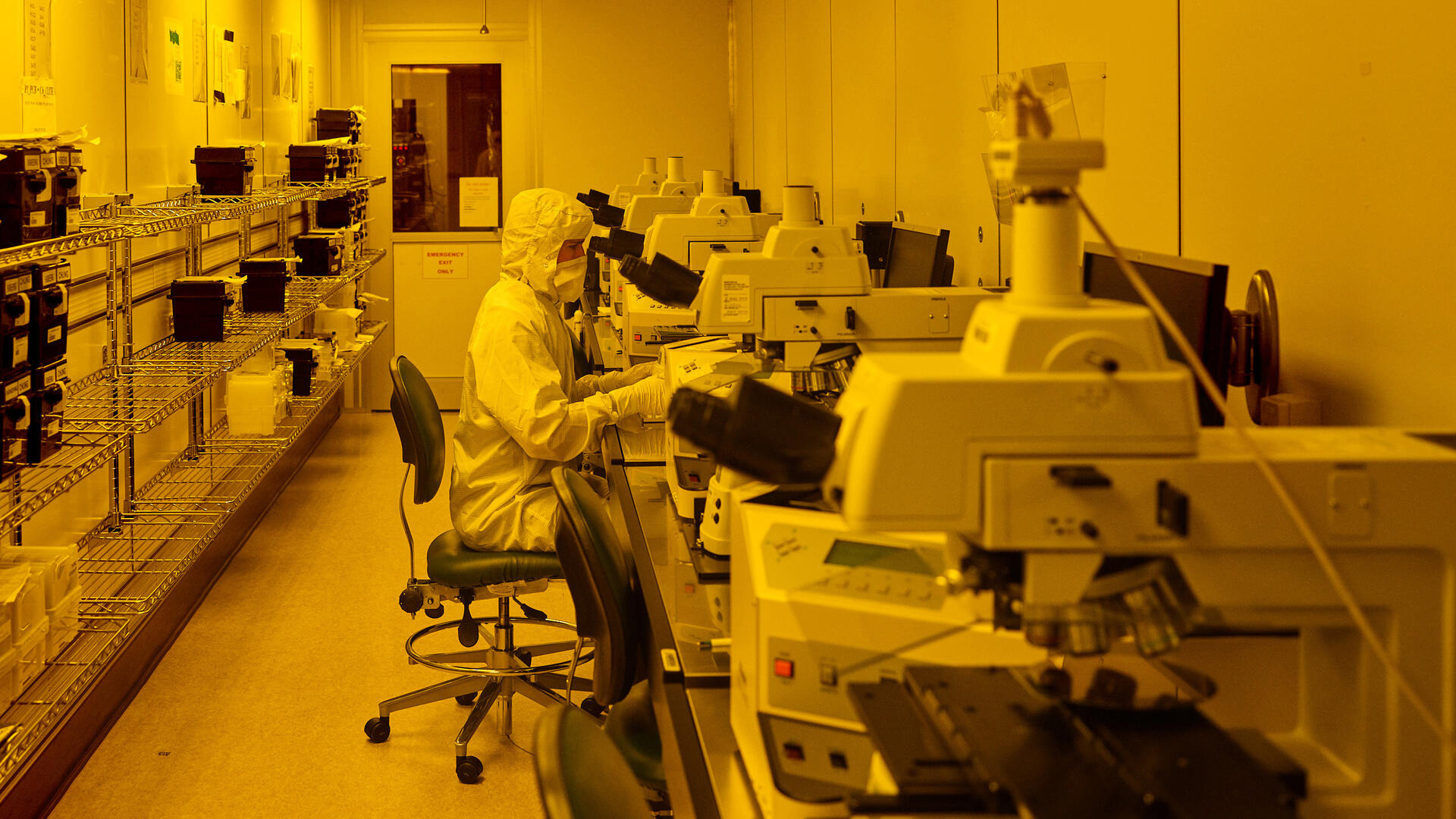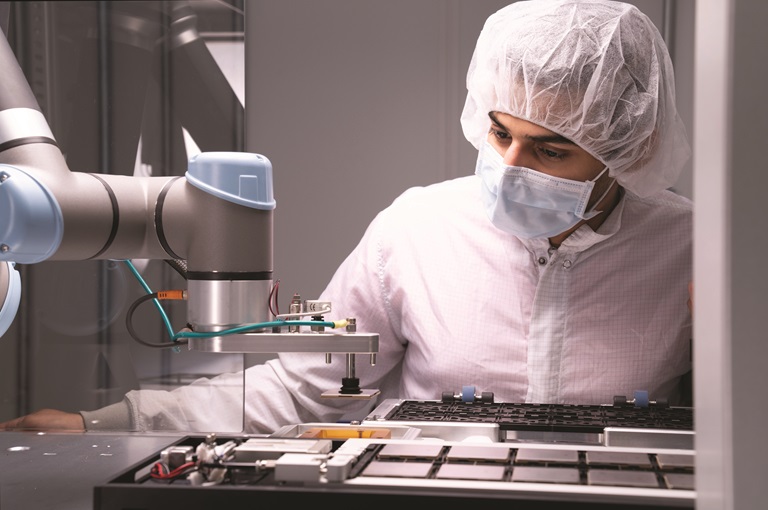Gadget Inspectors
Northrop Grumman Explores New Ways to Inspect Microelectronics

By Nestor Vences Gonzalez
Artificial intelligence (AI) has been incorporated into many aspects of manufacturing, and now, a team at Northrop Grumman is exploring how to leverage AI for integrated circuit chip inspection, a critical process that previously has been completed manually.
Circuit chips are complex microelectronics components that do everything from receiving and amplifying cellphone wireless signals to powering computer processors. To the untrained eye, these microelectronics look like little boxes, but they are made up of hundreds of tiny electrical lines, transistors, resistors, capacitors and switches — and a stray dust particle or eyelash during the manufacturing process can destroy them.
“Inspecting chips is a necessary and time-consuming step in the manufacturing process,” said Kate Fountaine, the Northrop Grumman scientist leading the AI Automated Optical Inspection (AOI) project. “What we are trying to do is use AI to make the process of inspecting some of the world’s most advanced chips better.”

Printing The House
All chips begin as wafers, round reflective discs made of semiconductor material. Layers of metal and insulating materials are added and subtracted through various deposition and etch processes until the desired integrated circuit is fabricated on top of the wafer. Completed chips are diced out from the wafer and eventually placed into microelectronic packages that power some of the world’s toughest missions.
“The size of these electrical features can be 3,000 times smaller than the diameter of a human hair,” said Aaron Oki, a Northrop Grumman fellow. “There can be anywhere from 12 to 20 layers used on a wafer to complete the full integrated circuit.”
“Every step of the process is monitored to ensure manufacturing quality, with many check points over the entire process,” said Aaron. To ensure defects don’t make it to final assembled products, technicians manually examine chips with microscopes.
“Our customers expect that our chips perform flawlessly every time, without fail. Meticulous inspection is essential to ensuring our products are reliable and meet that expectation for every customer,” said Ben Heying, Director of the Space Park Foundry.
Automation Revolution
Kate leads the AI and machine learning (ML) working group at Northrop Grumman’s Space Park site in Redondo Beach, California. Partnering with a team at the University of Southern California, they’re leading the way to incorporate machine learning algorithms to the chip inspection process.
“I thought, ‘Let's see if AI machine learning can speed up this inspection process while maintaining the rigorous requirements needed in this industry,’” said Kate. We’re not trying to completely replace manual inspection, we simply want to reduce the time it takes to manufacture a chip by automating some aspects,” said Kate, noting this could significantly reduce the cost of manufacturing chips.
Many of the next-generation chips developed at Northrop Grumman foundries are produced via small batch manufacturing, so up to a few hundred. This limits the amount of training data available to train the AI models to autonomously inspect them. This presents a unique challenge for Kate’s team, as typical ML inspection techniques require large batch manufacturing of thousand or tens of thousands, for training datasets to be successful.
Over the course of a year, Kate’s team addressed this challenge by developing an AI AOI tool that uses a custom algorithm to detect defects in chips in this environment that may have been missed by available best-in-class detection tools. The tool then makes an assessment on whether to reject or move a chip to the next inspection point.
The AOI tool recently delivered promising results in a benchmark test that compared the new AI AOI tool to the currently available detection tools. Later this year, the team plans to complete a side-by-side comparison with manual inspectors.
“It's a really exciting new technology,” said Kate. “I see it as the next invention that's going to change the world the way the internet did in the late ’90s.”
Learn more about Northrop Grumman’s leadership in microelectronics.